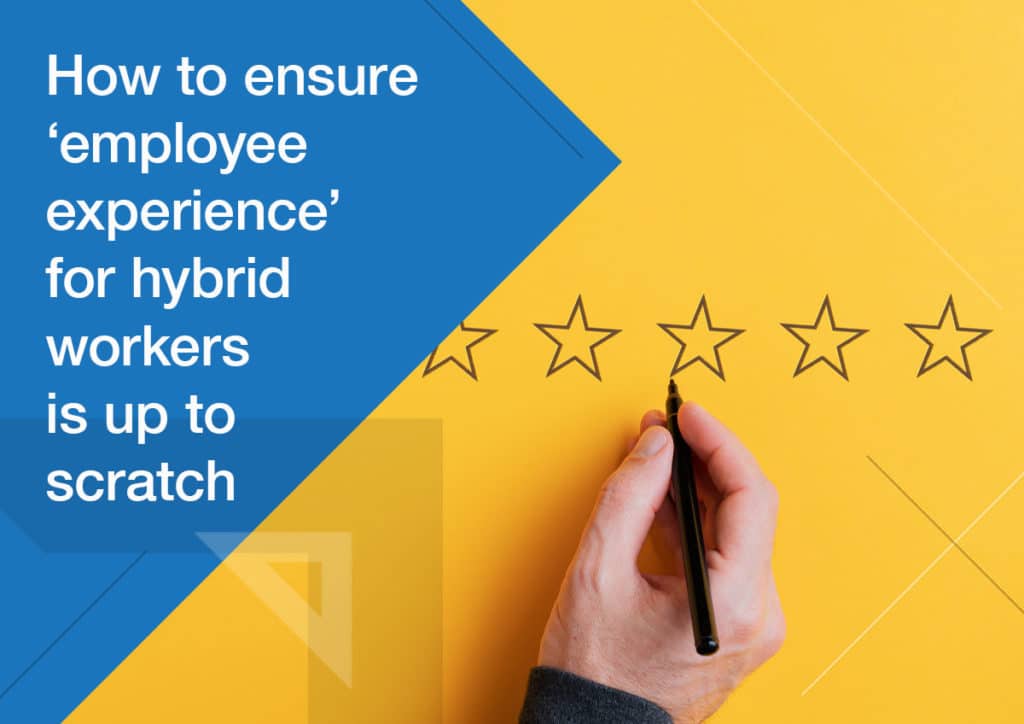The Move to Hybrid Working Happened at Pace – Organizations Need to Make Sure Employees’ Digital Experience is Up to Scratch
-
November 26, 2021
- Posted by: Pete Summers

The global pandemic has pushed organizations to the technology tipping point. Though many companies were already undergoing some level of digital transformation, a survey of global executives by McKinsey found companies moved 40 times faster than they thought was even possible before Covid-19.
Technology changes that would normally have taken more than a year to implement, like the adoption of digital hybrid working solutions, were turned around in an average of 11 days. This speed was essential, but it meant that digital experience was sacrificed as the need to quickly facilitate remote working took precedence.
Now that the dust has settled and temporary changes to how we work have become permanent, it is time for a switch in focus. As we look ahead to a new year where hybrid working is the norm, organizations must take a closer look at employees’ digital experience to maximize success.
Hybrid working challenges
In the last 18 months, all of us will have experienced a few problems as we get to grips with hybrid working. Here’s a short list of just some of the challenges that have emerged from the sudden shift:
- Troubled tech: Our research of 2,000 hybrid workers – the Digital Experience Report – found employees waste an astonishing 6.96 hours per week struggling with a lack of access to technology and with technology that doesn’t work. Across a company, these hours really start to add up, as well as causing employees much frustration.
- Too many platforms: To support hybrid working, many companies purchased and licensed multiple applications in the same category to fill short-term needs, such as having Zoom, Slack and Microsoft Teams in place. But in the long-term, this “category sprawl” results in wasted cost, a bloated technology stack, and can be a security and governance risk.
- Burnout and isolation: A potential pitfall of hybrid working is the “mission creep” of work into home life. A World Economic Forum report found that some employees ended up working for longer during the pandemic, and in our own research, almost a third (30%) of hybrid workers said they’d worked longer hours. This greatly increases the risk of burnout.
- Pressure on IT and HR teams: Linked to the previous point is the increased pressure on IT and HR teams to work together to facilitate a distributed hybrid workforce while safeguarding staff. Employee well-being is critical, but HR teams often lack visibility into employees’ working patterns and cannot see if they are struggling with new IT, to identify those with training needs or at risk of overworking.
Understanding and insight
So how do you tackle these issues? It all starts with data and KPIs, which provide IT and HR teams with a better understanding of how employees interact with technology and with each other to “get work done.” These insights allow the digital experience and work patterns of employees to be measured, and uncover potential issues and risks before they become a problem.
For example, a KPI to measure application stability will uncover issues with apps crashing. A KPI specifically for category sprawl will identify multiple applications in single software categories, allowing for opportunities to rationalize or standardize applications. And a range of KPIs around work patterns and out of hours working help to spot potential signs of burnout or isolation.
When such KPIs are implemented company-wide, it gives IT and HR teams a common language so they can address hybrid working challenges like those listed above. Armed with this information, IT and HR can shift from a reactive “firefighting” mode to a proactive approach to optimizing the hybrid working experience.
Scalable Software’s workforce analytics platform, Acumen, makes this possible. It tracks the usage of your organization’s systems and technology investments, and establishes targeted KPIs that provide business leaders with deep visibility in hybrid workers’ digital experience – enabling them to take action and optimize it.
To learn more about how Acumen can help you, visit here.